Learn about the unique properties of sunflower honey, its health benefits, rich history, and how to identify pure,...
Honeydew: A Natural Food Source for Bees and Its Amazing Properties
Introduction
Honeydew is a sweet, sticky liquid produced by insects such as aphids, scale insects, and whiteflies. These insects feed on plant sap and excrete honeydew as a byproduct. Although honeydew itself is not harmful to plants, its accumulation can cause issues. By coating the surface of leaves, honeydew disrupts photosynthesis and creates an environment conducive to the growth of harmful fungi, such as sooty mold. This can be particularly damaging in agriculture.
However, honeydew is not just a harmful substance; it plays a significant role in nature. It serves as a food source for many beneficial insects, including honeybees. Honeybees use honeydew to produce honeydew honey, which has unique properties and is considered a specialty product in some parts of the world. Additionally, honeydew can enhance the lifespan and fertility of beneficial insects like parasitoids and predators, aiding in natural pest control.
Some people confuse honeydew with natural honey. While natural honey is produced by honeybees from flower nectar, honeydew is a plant secretion resulting from insect activity. Honeydew honey, though different in origin from regular honey, has its own distinct properties and can sometimes be even richer than floral honey.
In this article, we will explore the role of honeydew in nature, its differences from natural honey, and its impact on beneficial insects and agricultural ecosystems. Join us as we delve deeper into this fascinating substance.
How is Honeydew Produced?
Many plants are sources of honeydew. These plants attract insects, which then feed on them. Trees and shrubs such as date palms, eucalyptus, tamarisk, camel thorn, poplar, mulberry, oak, plum, beech, and others are common sources of honeydew. Insects like aphids and coccids feed on plant sap. They suck the sap from leaves, which is rich in sugars but low in protein. Since proteins are essential for their growth, these insects consume large amounts of sap to obtain sufficient protein. In this process, excess sugars are excreted as honeydew.
Honeydew typically appears as small, sticky droplets on the leaves and stems of plants. Over time, it can dry and form a shiny, transparent layer on the plant's surface. In some cases, honeydew accumulates to such an extent that it drips from the leaves onto the ground.
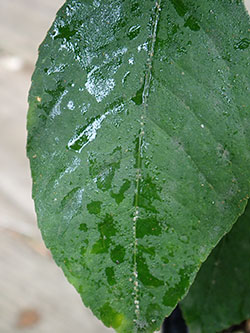
Honeydew on a leaf
Composition of Honeydew
Plant phloem sap primarily consists of sucrose, with concentrations ranging from 0.7 to 1.5 Molar. Some plant species also produce oligosaccharides from the raffinose family and sugar alcohols, especially in plants from families like Oleaceae (olive family) and Rosaceae (rose family).
Honeydew produced by different insects typically contains varying ratios of sugars such as hexoses, sucrose, melezitose, erlose (a 16-carbon trisaccharide), and various di- and trisaccharides. However, phloem sap from host trees usually lacks trisaccharides. Interestingly, the sugar ratios in honeydew can vary significantly among different species of Hemipteran insects (such as aphids) feeding on the same tree species.
The hydrolysis of sucrose and the formation of oligosaccharides occur within the bodies of aphids. The oligosaccharides found in aphid body extracts are very similar to those in honeydew produced by different aphid species. In terms of other compounds, the content of amino acids and mineral ions in honeydew is much lower than that of sugars. Glutamine and glutamate are the dominant amino acids in honeydew from all Hemipteran insects, as well as in phloem sap. Among mineral ions, potassium has the highest concentration in honeydew and phloem sap. These compounds and their variations indicate that honeydew is not just a simple sugary substance but a complex and diverse mixture influenced by the type of insect and host plant.
Difference Between Honeydew Honey and Floral Honey
You might be wondering what the difference is between honeydew honey and regular honey. The answer lies in their origin and chemical composition. Honeydew honey is typically derived from trees and plants like camel thorn and may have a slightly bitter or salty taste. In contrast, regular honey is produced from flower nectar and has a sweet, mild flavor.
Honeydew honey is usually darker than regular honey and has a strong, distinct aroma. It may also contain more minerals derived from plant sap. On the other hand, regular honey, produced from flower nectar, is generally lighter and sweeter.
What is Honeydew Honey?
Honeydew honey is produced when bees collect honeydew from leaves, stems, and bark of trees and other sap-producing plants.
Honeydew honey can be "multifloral," meaning it comes from various species, with no single species making up more than 10% of the total. However, it is important to note that honeydew honey is not floral honey in any way.
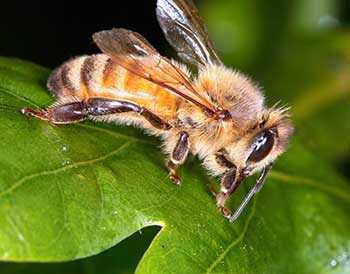
Honeybee collecting honeydew
When more than 10% of its source comes from specific species such as pine trees, silver fir, beech, or others, it may be considered a monofloral honey. Honeydew honey can vary significantly in appearance, taste, and aroma.
Generally, it is darker in color, has a strong flavor, and moderate sweetness. Honeydew honey typically has a distinct and robust aroma, which can be resinous, piney, herbal, or malty.
In the table below, plants that are sources of honeydew are listed along with their scientific names and the geographical regions where they are found. This information will help you better understand the sources of honeydew.
Note: To view the full table, hover your mouse over it.
Table 1: Honeydew Sources
| Common Name | Scientific Name | Country and Description |
|---|---|---|
| Silver Fir | Abies alba | Central and Southern Europe (Germany, Austria, Serbia, Kosovo) |
| Bulgarian Fir | Abies borisiiregis | Bulgaria, Greece, North Macedonia |
| Greek Fir | Abies cephalonica | Greece, Greek Islands |
| Maple | Acer spp. | Northern temperate regions (Europe, Asia, North America) |
| Hazel | Corylus spp. | Temperate regions of Europe, Asia, and North America |
| Common Hazel | Corylus avellana | Europe, Western Asia, North Africa |
| Turkish Hazel | Corylus colurna | Southeast Europe, Turkey, Caucasus |
| Hawthorn | Crataegus spp. | Northern temperate regions (Europe, Asia, North America) |
| Beech | Fagus sylvatica | Western and Central Europe (France, Germany, Serbia, Kosovo) |
| Ash | Fraxinus excelsior, Fraxinus ornus | Europe, Western Asia, North Africa |
| Hickory | Carya spp. | North America (irregular production; low-quality honey) |
| Eastern Juniper | Juniperus virginiana | North America (rare honeydew production) |
| Larch | Larix decidua | Central and Eastern Europe, Siberia |
| Apple | Malus sylvestris | Europe, Western Asia, North America |
| Red Beech | Nothofagus fusca | New Zealand (honeydew source from Ultracoelostoma assimile and Ultracoelostoma brittini) |
| Black Beech | Nothofagus solandri | New Zealand (honeydew source from Ultracoelostoma assimile and Ultracoelostoma brittini) |
| Norway Spruce | Picea abies | Northern and Central Europe (source of German Black Forest honey, Serbia, Kosovo) |
| Pine | Pinus spp. | Temperate and subtropical regions (Europe, Asia, North America) |
| Turkish Pine | Pinus brutia | Turkey, Greece, Cyprus (honeydew source from Marchalina hellenica) |
| Aleppo Pine | Pinus halepensis | Mediterranean regions (Southern Europe, North Africa, Middle East) |
| Mountain Pine | Pinus mugo | Central and Southern Europe (Alps, Carpathians, Balkans) |
| Black Pine | Pinus nigra | Southern Europe, Turkey, Caucasus |
| Scots Pine | Pinus sylvestris | Europe, Northern Asia |
| White Poplar | Populus alba | Europe, Western Asia, North Africa |
| Black Poplar | Populus nigra | Europe, Western Asia |
| Aspen | Populus tremula | Europe, Northern Asia |
| Apricot | Prunus armeniaca | Central Asia, China, Europe, North America |
| Cherry | Prunus spp. | Northern temperate regions (Europe, Asia, North America) |
| Plum | Prunus domestica | Europe, Western Asia |
| Peach | Prunus persica | China, Europe, North America |
| Pear | Pyrus communis | Europe, Western Asia |
| Oak | Quercus spp. | Temperate and subtropical regions (Europe, Asia, North America) |
| Austrian Oak | Quercus cerris | Southern and Eastern Europe, Turkey |
| Himalayan Oak | Quercus dilatata | Himalayas (India, Nepal, Bhutan) |
| Hungarian Oak | Quercus frainetto | Southeast Europe (Hungary, Romania, Balkans) |
| Sessile Oak | Quercus petraea | Europe, Western Asia |
| Downy Oak | Quercus pubescens | Southern and Central Europe |
| English Oak | Quercus robur | Europe, Western Asia |
| Gooseberry | Ribes uva-crispa | Europe, Northern Asia, North America |
| Weeping Willow | Salix × sepulcralis 'Chrysocoma' | Northern temperate regions (Europe, Asia, North America) |
| White Willow | Salix alba | Europe, Western Asia, North Africa |
| Rowan | Sorbus aucuparia | Europe, Northern Asia |
| Linden | Tilia spp. | Northern temperate regions (Europe, Asia, North America) |
| Small-Leaved Lime | Tilia cordata | Europe, Western Asia |
| Large-Leaved Lime | Tilia platyphyllos | Europe, Western Asia |
| Silver Lime | Tilia tomentosa | Southeast Europe, Turkey |
| American Elm | Ulmus americana | North America |
Recent Research on Honeydew Honey Properties
In recent years, extensive research has been conducted on the properties of honeydew honey. These studies have shown that honeydew honey is not only a nutritious food but also has therapeutic properties. Some of the recent findings include:
Antibacterial Properties: Studies have shown that honeydew honey has strong antibacterial properties and can help treat bacterial infections. This is due to the presence of phenolic compounds and enzymes such as glucose oxidase in honeydew honey.
Anti-Inflammatory Properties: Honeydew honey can help reduce inflammation in the body. This property is particularly beneficial for individuals suffering from inflammatory diseases such as arthritis.
Immune System Boost: Honeydew honey contains natural antioxidants that can help strengthen the immune system. These antioxidants fight free radicals and prevent cellular damage.
Digestive Health: Some research has shown that honeydew honey can improve digestive function and help treat issues such as stomach ulcers and acid reflux.
Future Research on Honeydew
Given the unique properties of honeydew honey, more research is being conducted to discover new applications for this substance. For example, scientists are exploring the potential use of honeydew honey in the production of anti-cancer and anti-aging drugs. Additionally, research is underway on the use of honeydew honey in the food and cosmetics industries.
A Fact to Consider
Honeydew is a natural substance produced by insects on plants. Although it can be harmful to plants, it serves as a food source for honeybees and other beneficial insects. Honeydew honey, produced from this substance, has unique properties and can be used as a healthy and nutritious food.
However, it is important to understand the difference between honeydew honey and regular honey to fully benefit from their properties. Recent research has shown that honeydew honey is not only a nutritious food but also has therapeutic properties. From antibacterial and anti-inflammatory properties to immune system support and digestive health, honeydew honey can be used as a natural and beneficial substance in our daily lives.
Finally, given the importance of honeydew in nature and its applications in various industries, more research is being conducted to discover new uses for this substance. We hope that in the future, honeydew honey will be recognized as a valuable material in medicine, food, and industrial applications.
We look forward to a day when everyone has access to real honey.

Related products
Manna Honey
Lotus honey
Leave a comment
Log in to post comments
Related posts
 Honey Hub, a treasure trove of nature's amazing products
Honey Hub, a treasure trove of nature's amazing products What is Raw Honey? Why We Should Eat This Honey – Benefits Unveiled
What is Raw Honey? Why We Should Eat This Honey – Benefits Unveiled










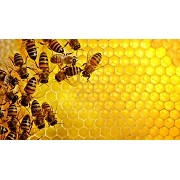
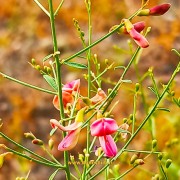
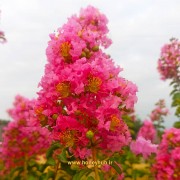
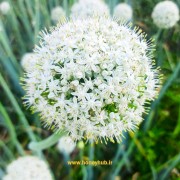
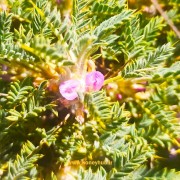
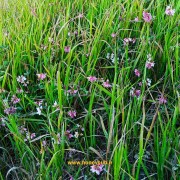




Latest comments